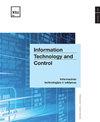基于几何地标和动力学约束的模糊路径规划算法
IF 2
4区 计算机科学
Q3 AUTOMATION & CONTROL SYSTEMS
引用次数: 5
摘要
本文主要研究复杂二维地形下移动机器人的路径规划问题。通过改变空间取点方法,结合Dijkstra算法和模糊逻辑算法,提出了一种基于模糊规则的多导点路径规划算法。该算法的规划过程分为三个阶段。第一阶段通过设计搜索空间识别禁区边缘点,标记X、Y方向边缘点的可行区域宽度,并标记其中点。第二阶段使用Dijkstra算法,对这些标记点以及起点和终点进行路线图排序,并采用成本最低的序列作为搜索路线图。第三阶段,使用模糊逻辑系统逐个搜索路标,直到搜索到终点区域。仿真结果表明,该算法可以解决传统模糊推理算法无法规划的复杂环境。与图搜索算法相比,该算法大大缩短了规划时间,并提供了更灵活的转弯角度。与采样算法相比,该算法在估计每一步的运动状态时,能更好地考虑机器人的尺寸以及速度与转角的关系。该算法将在后续的研究中扩展到群体路径规划和动态环境规划中。本文章由计算机程序翻译,如有差异,请以英文原文为准。
A Fuzzy Logic Path Planning Algorithm Based on Geometric Landmarks and Kinetic Constraints
This paper mainly focuses on the path planning of mobile robots in complex two-dimensional terrain. It proposes a fuzzy rule-based path planning algorithm for multiple guide points by changing the spatial point-taking method and combining Dijkstra's algorithm and fuzzy logic algorithm. The planning process of this algorithm divide into three stages. The first stage identifies the edge points of the forbidden area by designing the search space, marks the feasible area widths of the edge points in X and Y directions, and marks their midpoints. The second stage uses Dijkstra's algorithm that does the road map sorting on these marked points and the starting and ending points and takes the lowest cost sequence as the search road map. In the third stage, using a fuzzy logic system to search these road signs one by one until the endpoint area is searched. The simulation results show that this algorithm can solve the complex environment that traditional fuzzy inference algorithms cannot plan. Compared with the graph search algorithm, this algorithm dramatically reduces the planning time and provides more flexible turning angles. This algorithm can better consider the robot's size and the relationship between speed and turning angles while estimating the motion state at each step compared with the sampling algorithm. This algorithm will extend to group path planning and dynamic environment planning in subsequent studies.
求助全文
通过发布文献求助,成功后即可免费获取论文全文。
去求助
来源期刊

Information Technology and Control
工程技术-计算机:人工智能
CiteScore
2.70
自引率
9.10%
发文量
36
审稿时长
12 months
期刊介绍:
Periodical journal covers a wide field of computer science and control systems related problems including:
-Software and hardware engineering;
-Management systems engineering;
-Information systems and databases;
-Embedded systems;
-Physical systems modelling and application;
-Computer networks and cloud computing;
-Data visualization;
-Human-computer interface;
-Computer graphics, visual analytics, and multimedia systems.
 求助内容:
求助内容: 应助结果提醒方式:
应助结果提醒方式:


